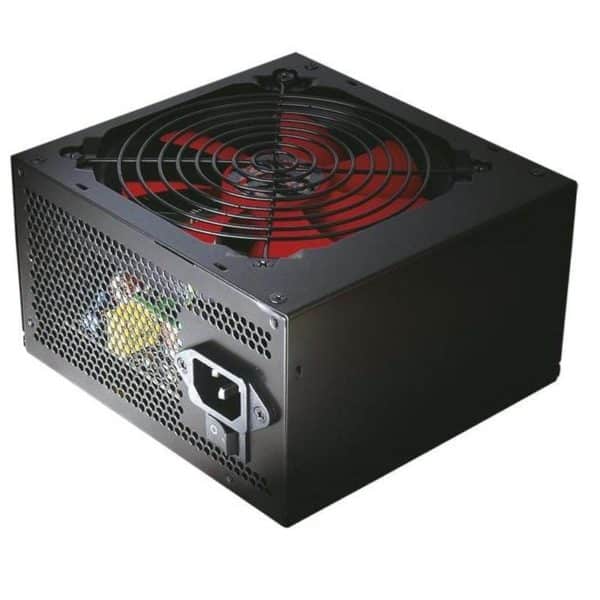Although most people use a single hard drive on their computers or, at most, two HDDs, the truth is that more and more people use several drives and place them in RAID to enjoy different advantages when it comes to storing information on your disks.
With the current price of hard drives (HDD) and solid state drives (SSD), more and more people are deciding to use RAID configurations in order to obtain interesting functions. Are you planning to use a RAID? Here we show you what it is, what it is for and what RAID configurations you can use to get more out of your storage units.

Article Content
What is a hard drive RAID?
“Redundant Array of Independent Disks”, that is the literal translation of a RAID (Redundant Array of Independent Disks for its acronym in English). It is a group of independent hard drives that work together to offer different benefits to the user.
Although they are independent disks, RAID allows the computer to recognize them as a single logical unit so that the information is distributed between them as if it were a single disk.
What is the purpose of making a RAID?
Having a RAID in your computer setup can be very useful in many different ways. Those people who use important information and cannot afford for it to disappear due to a failure can use a disk configuration that allows the information to be kept safe even when one of them fails.
There are also configurations that allow you to enjoy better performance when moving files between disks and the computer, as well as working with better performance with heavy programs, with video editing and design being especially the functions that do the most. using RAID configurations.
Without a doubt, improving the transfer speed, as well as the reliability of the disks and being able to keep information constantly safe, without the need to make backup copies and without worrying about some disks failing, are key functions that have made RAIDs are used not only in companies but also in the home.
RAID levels
There are different levels or configurations of a RAID. Each of them is intended to offer certain advantages over other types of configurations when nesting hard drives.
To know which RAID level is best for us, we first have to think about what we are going to do with the disks and what we expect to receive from the RAID made with them. Seeking reliability in information is not the same as opting for the highest possible transfer speed.
Let's see all the possible configurations and what their characteristics are. This way we can know which one is best for us to use for the purpose we have in mind.
RAID 0
It is one of the most used levels. It is necessary to have a minimum of 2 disks and this configuration counts the sum of all HDDs in the level to be able to store information.
RAID 0 It is a level at which data is distributed between both hard drives. The great advantage of this is that it offers greater performance when moving information. In the same way, its main drawback is that it does not have greater tolerance to faults, so a failure in the disk could lead to the total loss of the information stored on them.
Especially recommended when a higher system performance and access information, such as working with large files in graphic design, 3D, and video editing projects. The investment is minimal so it is popular with tight budgets.
RAID 1
Known as mirroring RAID 1 is mainly used in entry-level servers that do not require large storage capacity.
RAID 1 makes use of a minimum of 2 hard drives and, as its name indicates, all the information that reaches the first disk is duplicated on the second disk, and so on with the additional hardware. In the event that the first disk failed, the equipment would continue to function correctly using the data stored on the second drive. Basically, it's like working with a constant backup.
Thanks to its “mirroring” effect, RAID 1 offers fast recovery after a drive failure, making it one of the best options in terms of fault tolerance.
Its performance increases compared to a single disk, since both drives can be read and written. The drawback of this configuration is that it can stress the disk, causing a large overload. In the same way, memory is limited to the smallest unit, so it is important to have disks with the same capacity so as not to waste storage when using this level.
RAID 5

Requiring a minimum of 3 hard drives, RAID 5 combines the best of the previous levels. It combines the speed and performance of RAID 0 with the failsafe of RAID 1. This allows you to transfer data faster and access information more easily while maintaining all your data. in a safe way. This RAID is usually the most used level in servers due to its benefits.
The storage space available on this level is equal to that of number of disks -1. In this way, if the configuration is made up of 4 disks with 1 TB of storage, the RAID capacity will be 4 – 1 disks, that is, 3 TB of storage.
The information that reaches the disks is divided into blocks using parity to be able to recover the data in the event of a failure. When one of the disks fails, the information that has been damaged is corrected using the data that has been stored on the other units. One of the drawbacks of this configuration is that performance will drop significantly when a failure occurs. The slowdown is especially noticeable with high-capacity SATA drives, making the rebuild time high.
Undoubtedly, the most serious problem and the worst scenario that can be encountered at this level is that the second disk fails while the first disk is being rebuilt. If this happens, all stored information would be lost.
RAID 6
This level seeks to solve the problem of RAID 5 in terms of fault tolerance, imitating its operation by adding a reserve disk that starts working in the event that one of the disks breaks down. A minimum of 4 hard drives are required. This way, when one of the disks fails the system will function correctly, as if a RAID 5 were being used.
Because a new unit that works on parity comes into play, performance when writing data to the disks decreases. This new hard drive will not work as extra storage either, since being used for parity will only serve as a backup copy. This is how if you have 4 1 TB hard drives, you will only have 2 TB of storage.
This is a good configuration when you want to withstand several failures in the units used.
RAID nesting by levels
In the same way that several disks can be placed together to configure a RAID, several RAID levels can also be nested to be able to enjoy its advantages at a higher level, in exchange the cost will be higher since it requires twice as much. disks to be able to make use of these nests.
RAID 0 + 1
In order to carry out a RAID 0+1, 4 hard drives are needed. The disks will be grouped in pairs so that each one can form a RAID 0. A RAID 1 is mounted on these two blocks of hard drives.
With this hard drive configuration, greater performance is obtained in both reading and writing, however it does not tolerate two simultaneous failures, which is why it falls behind RAID 10 in terms of reliability.
RAID 10 (1+0)
With a minimum of 4 disks required, RAID 1+0 makes use of a RAID 1 and above them a RAID 0. This configuration allows you to enjoy high performance when accessing information (thanks to RAID 0) while High fault tolerance is also enjoyed (due to RAID 1).
In the case of a configuration with 4 drives, up to two different disks can fail without losing information, as long as the drives are from different subgroups.
Because a minimum of 4 hard drives are used, the price is higher. However, its qualities make it perfect for use on database servers, where you get quick access to information while data can be safeguarded in case of failure.
RAID 50 (5+0)
When a higher level of storage is required, RAID 5+0 can be a good option to consider. It is a RAID 5 and above it a RAID 0. They require at least 6 discs while one will be used as backup of the information. With this configuration, up to 3 disks can be damaged without losing data.
Thanks to the configuration, you can obtain incredibly high volume and greater reading performance compared to a traditional RAID 5, in the same way that the writing speed of information slightly increases.
Its disadvantages are the same as RAID 5, having a high reconstruction time due to having to recalculate parity, as well as a higher price.
RAID 60 (6+0)
The most expensive configuration since it requires a minimum of 8 hard drives to be able to put it into practice. RAID 6+0 is made up of a RAID 6 and above it a RAID 0. Thanks to this configuration, very interesting performance is obtained, especially when reading information from the disks.
As with RAID 6, the main drawbacks are low writing performance due to having to perform twice as many calculations for parity, in the same way that the hardware will suffer more, so its useful life will be shortened.
Software RAID or Hardware RAID
RAID systems can be controlled by both software and hardware. Depending on the method chosen to control the system, differences in operation and performance may be seen at the chosen levels.
Software control

The hard drives that make up the array are connected directly to the computer's motherboard and it is the processor and the installed operating system that are responsible for carrying out the necessary operations to control the RAID system and the hard drives.
Because it uses the computer's hardware, the limit of units that can be connected is set by the motherboard. These boards usually have multiple SATA connections, the most common being 6 or 8 ports. In addition, configuration is much simpler compared to hardware system control.
The main drawback of using software to control the RAID is that the equipment's performance may be affected, especially when using levels that require more resources to function. There is also the possibility of losing information when hard drives degrade as it is more difficult to recover from RAID.
Hardware control

Unlike software control, where the hard drives are connected directly to the motherboard, in hardware control the storage drives are connected to a RAID controller (which in turn connects through a PCIe port to the motherboard). base) which is responsible for carrying out all the necessary operations to control the RAID system and the disks.
Enjoying this hardware allows you to have greater reliability compared to software control, and it is independent from the rest of the equipment's components. It is also capable of offering greater performance and does not affect the operation of the computer even when using levels that require excessive resources.
The problems of using hardware control to manage a RAID system fall especially on maintenance and compatibility. Firmware updates may be required to maintain hardware reliability. There is also the possibility that the hardware is not compatible with the motherboard or that general drivers are used as there are no proper drivers, which leads to poor performance unlike using the correct drivers.
To solve compatibility problems, it is always advisable to purchase a RAID controller from the same manufacturer as the motherboard to which it is going to be connected.
It is also important to take into account the model of the card to be used. We must look at whether it is compatible with the hardware we already have and if it is capable of supporting the RAID levels that we plan to use or that we may need in the future.

I have been glued to a monitor since a PC fell into my hands in 1997. Now I like to write about everything related to them.
Content writer. Graphic Designer and Search Engine Optimization




